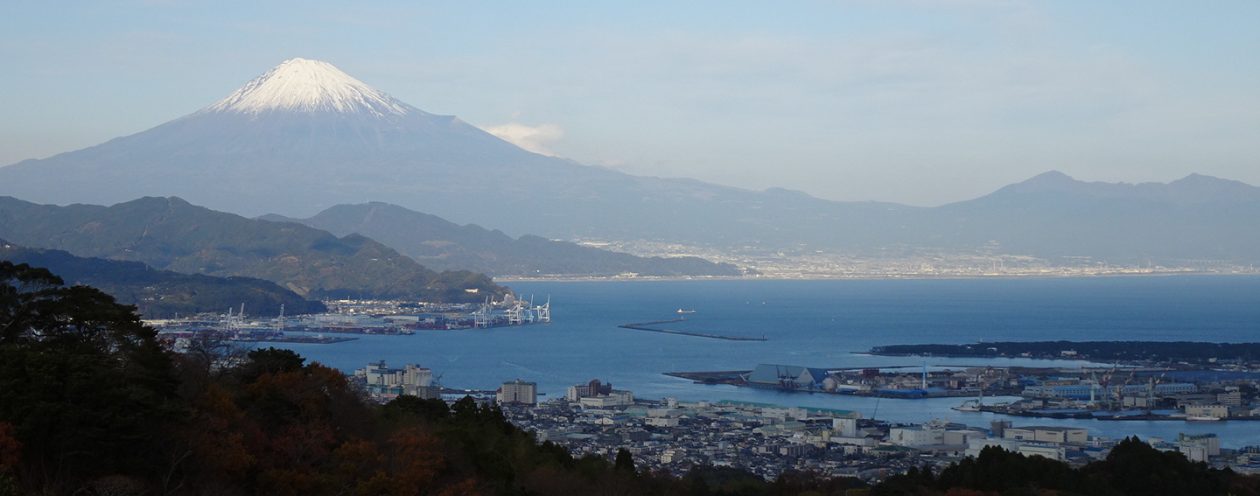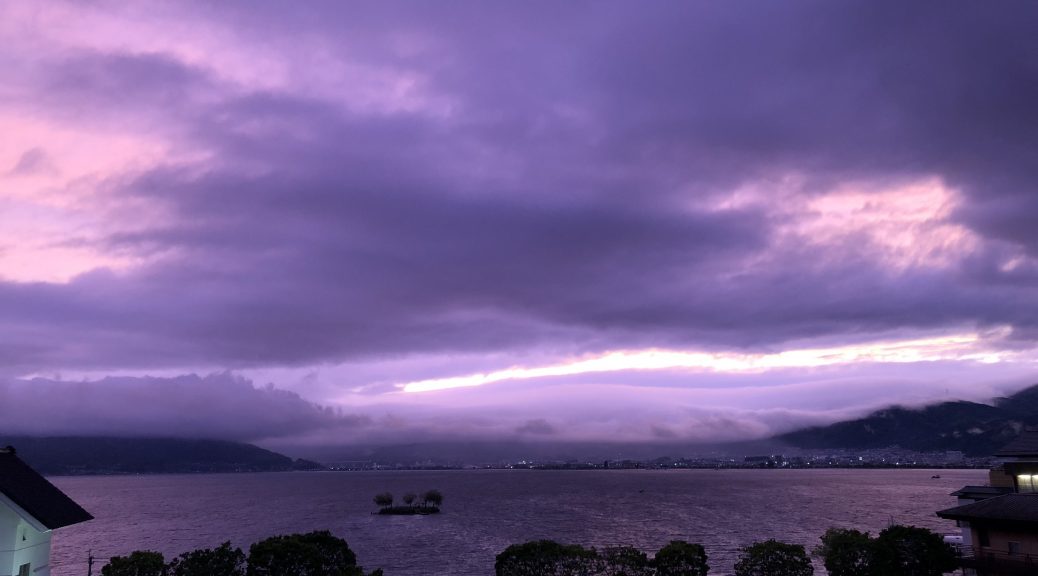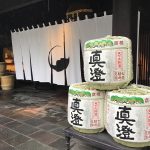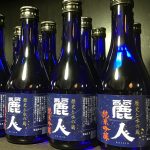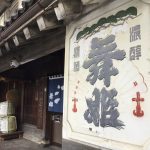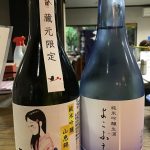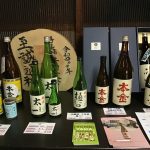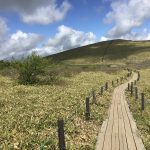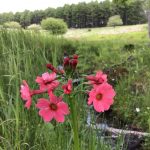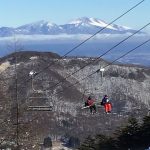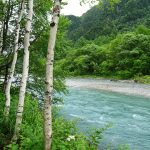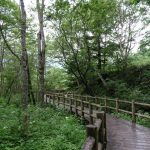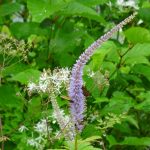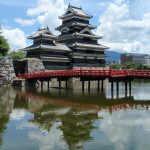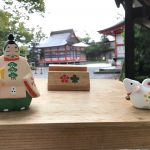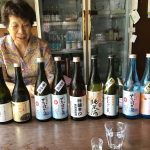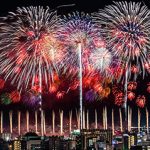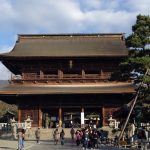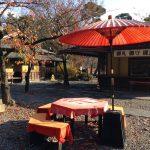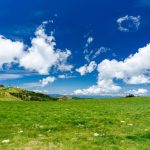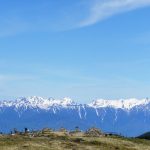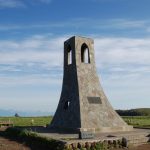N-95 Suwa, where the gods reside
Welcome to the sacred place of “Your Name”!
Suwa region is said to have the highest population in Japan during the Jomon period (approximately 12,000 to 2,500 years ago). It has unique cultures and customs that have been passed down for over several thousand years, and is surrounded by natural scenery that has captivated people throughout the ages. Although it is the same Japan, there are many extraordinary experiences everywhere that make you feel like you are in a different country.
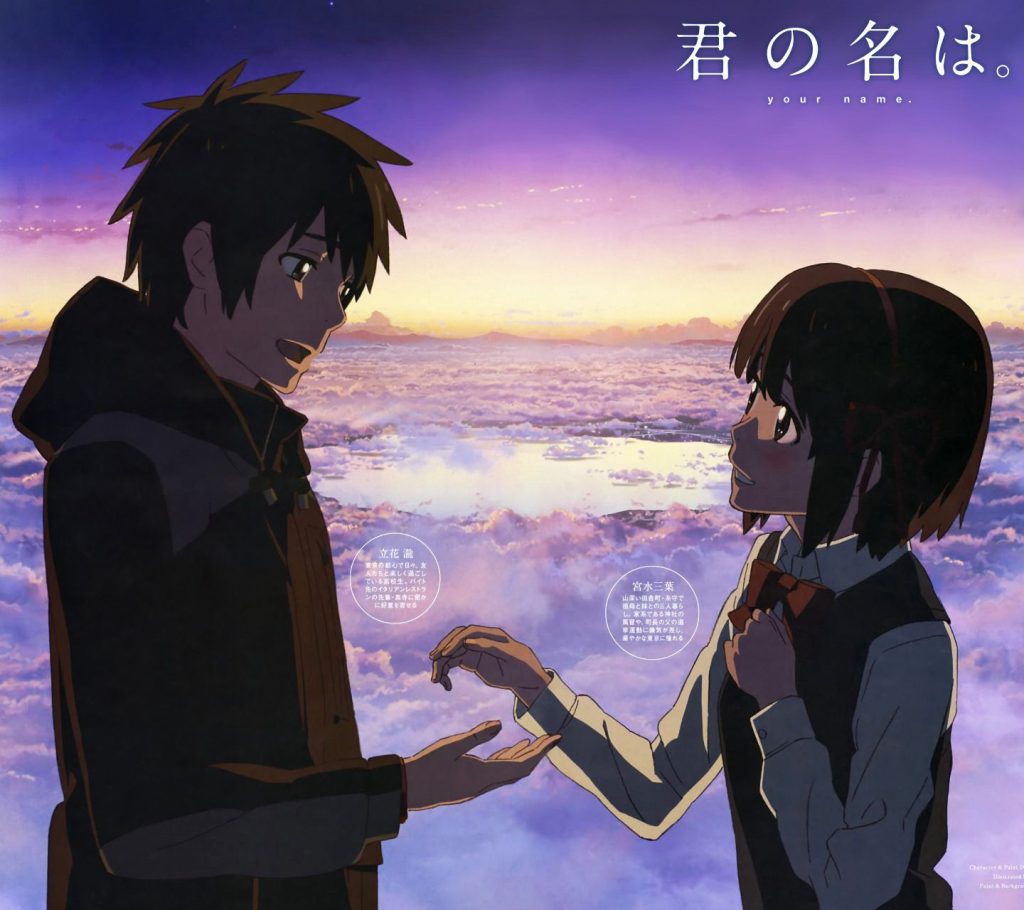
“Your Name” is a popular Japanese anime movie that was a huge hit not only in Japan but all over the world from 2016 to 2017.
// Synopsis //
A small-town high-school girl named Mitsuha and a Tokyo boy of the same age named Taki inexplicably start possessing each other’s bodies in randomly occur day-long bouts. From there, a strange relationship develops.
Itomori Town, where Mitsuha lives (in this movie), is home to a large lake called Lake Itomori, which appears throughout the film and has become a hot topic for its beauty and spectacular views. One of the most fantastical and memorable scenes is when Taki and Mitsuha meet across time at the top of the mountain where Miyamizu Shrine is located.
During the brief period between when the sun sets and night falls, known as “Kataware-doki” (twilight), under a faint sunset and a purple-tinted sky, they are enveloped in twilight, unable to see each other clearly. The place where the two first meet during this mysterious time is said to resemble the view of Lake Suwa from Tateishi Park, and it has become a sacred place visited by anime fans from all over the world.
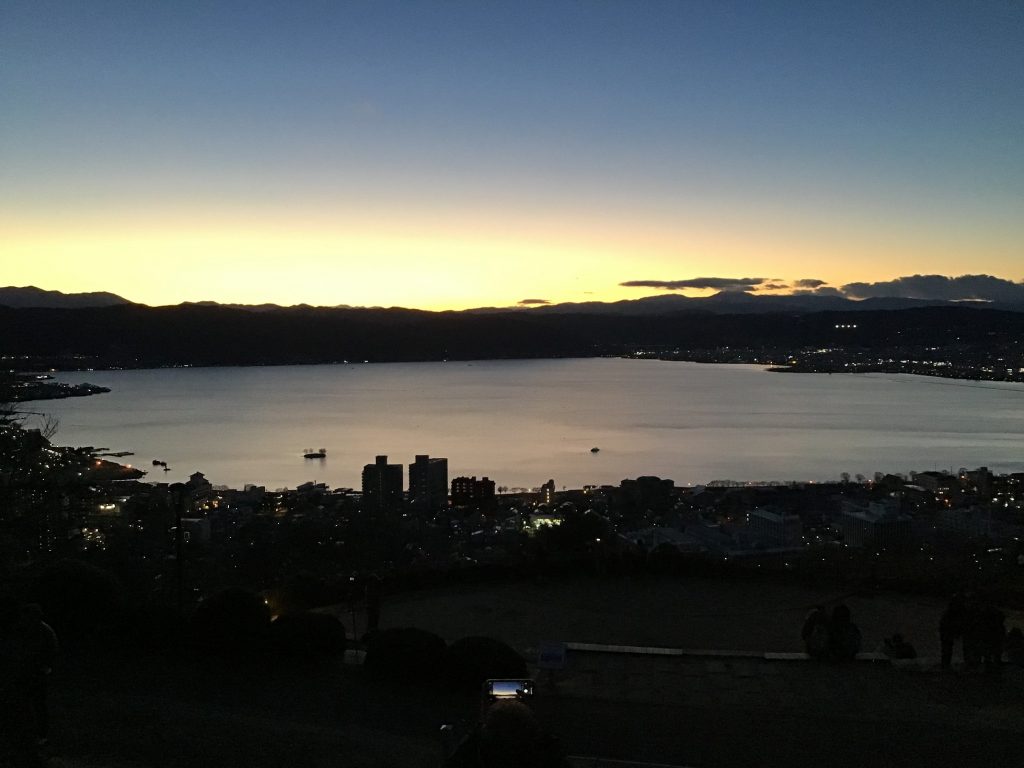
Lake Suwa is a tectonic lake (fault lake) formed when the earth’s crust was torn apart by fault activity about 2.6 million years ago. Simply saying, it is a lake formed by an earthquake. Lake Biwa, the largest lake in Japan, and Loch Ness, famous for Nessie, are also tectonic lakes. Although they are sometimes mistaken for caldera lakes, which are lakes formed by volcanic eruptions, this fault lake was formed when the strata shifted.
Suwa, where the gods reside
Suwa Taisha Shrine
Famous for its “Onbashira Festival“, which is held once every seven years, Suwa Taisha Shrine consists of Kamisha Honmiya, Kamisha Maemiya, Shimosha Akimiya, and Shimosha Harumiya around Lake Suwa.
Suwa Taisha Shrine is the head shrine of the approximately 10,000 shrines across Japan that worship “O-Suwa-sama” (God’s name), and is considered one of the oldest shrines in Japan, dating back to the myth in the Kojiki (the oldest history book in Japan). It doesn’t have a main hall, and continues to convey the ancient form of faith that regards nature itself as the deity. The deity’s virtues are diverse, and he has been revered by many important figures in history since ancient times as the guardian deity of rain, wind, and water, a god who prays for bountiful harvests and controls the source of life, and a god of valor. In particular, Takeda Shingen, a military commander from the neighboring province of Kai (Yamanashi Prefecture), revered O-Suwa-sama as the guardian deity of the samurai class, and his devout faith is evident in the way he built shrine buildings, donated land, and even revived rituals that had been abandoned.
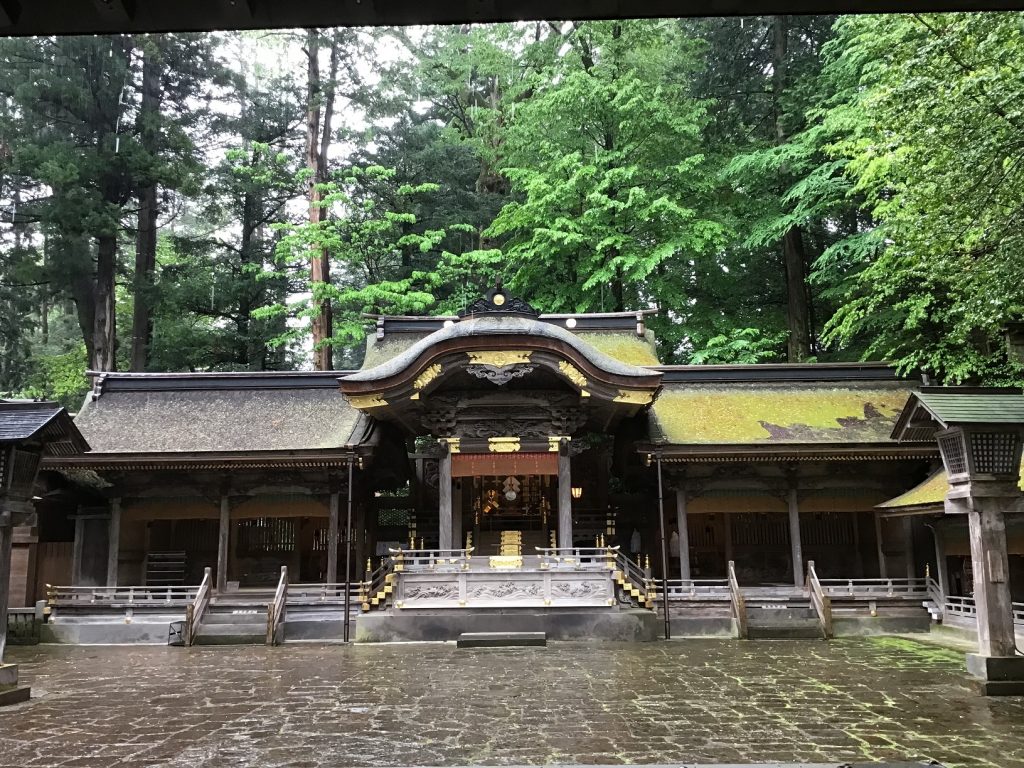
“Kuchikamizake” and “Doburoku”
“Kuchikami sake” is sake made by chewing rice in the mouth, then storing it in a container and leaving it. The amylase in saliva converts starch into sugar, and wild yeast ferments the sugar to make sake. Kuchikami sake has been used in important Shinto rituals since ancient times.
Nagano Prefecture has a long history of sake, and in the Suwa region, there has been a Shinto ritual of unrefined sake such as “Kuchikami sake” since ancient times, which has been passed down to the present day.
It is difficult to actually recreate “kuchikami sake,” but a similar image of sake is “Doburoku.”
“Doburoku” is a type of sake made by fermenting rice and rice koji, and drinking it as is, without filtering it through a cloth or other material.
“Sake” is generally drunk by straining the mash to make it colorless and transparent, and is classified as “seishu” under the Liquor Tax Act, while “doburoku” is classified as “other brewed alcohol.”
“Doburoku” is a cloudy white sake that is not strained, with rice and koji grains remaining, making it similar to porridge. Its grainy texture and rich sweet and sour taste make it addictive to some people.
The foothills of the Yatsugatake Mountains, close to Suwa, are also known as the “sacred place of Doburoku.”
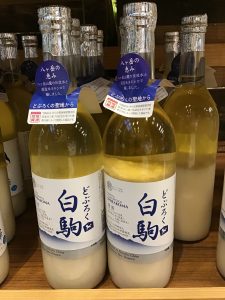
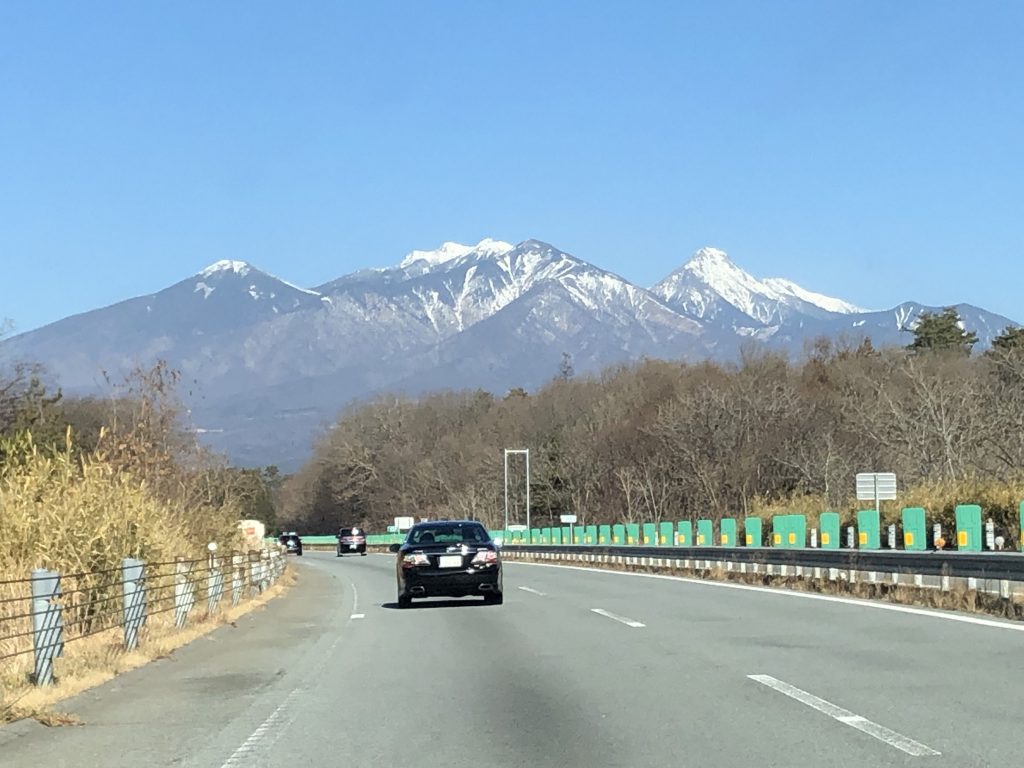
Suwa Five Sake Breweries
In Suwa City, five sake breweries, Masumi, Reijin, Maihime, Yokobue, and Honkin, are lined up along the Koshu Kaido road, just in 500 meters. The excellent quality of the sake produced by these breweries comes from the high-quality underground water that springs from the Kirigamine Plateau in the Yatsugatake mountain range, the clear air, and the cold climate. Although they are rooted in the same land, each brewery continues to brew their own unique and distinctive sake.
Takashima Castle
Suwa Takashima Castle was also known as the “Floating Castle of Suwa” because it once appeared to float on the lake, and was selected as one of Japan’s three great lake castles. A castle town was established on the north side of the castle, and there was only one road from the castle town to the castle. The castle is in a form called a linked castle style, with Sannomaru, Ninomaru, and Honmaru lined up in a straight line from the north. A three-story, watchtower-type castle tower was built in the Honmaru, but another major feature of Takashima Castle is that the roofs of the castle tower and other main buildings were made of persimmon shingles instead of tiles. It is said that this was because heavy tiles could not be used on the soft ground by the lake, or because tiles would freeze and crack in the cold climate of Suwa, but the reason is not clear.
From around 1870 with the Meiji Restoration, Takashima Castle, a symbol of the old ruling system, was demolished. After the demolished, the site of the main castle was opened to the public as “Takashima Park,” but the rest of the area became urbanized. In 1970, thanks to the enthusiasm of local residents, the exterior of the castle tower was restored, and the gates and turrets were also reconstructed.
Takashima Park, where the castle tower stands, is famous for its cherry blossoms and wisteria, and is a popular walking course for locals. On a clear day, you can enjoy a spectacular view of Mt. Fuji from the castle tower!
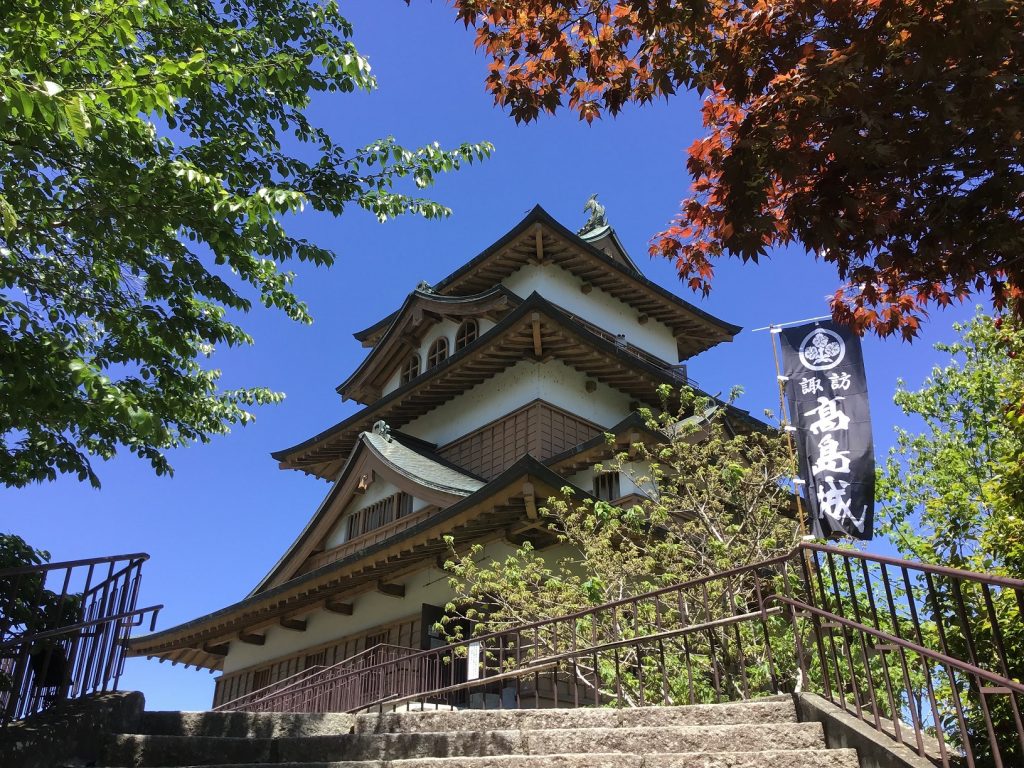
Katakurakan
This building was designated an Important Cultural Property (2011) by the Katakura Zaibatsu (conglomerate), known as the “Silk Emperor” from the Taisho to early Showa periods, as a social gathering place for local residents. It is a luxurious, retro Western-style building.
It also features a large bath called Sen-nin-buro (a thousand people bath), a marble bath filled with natural hot spring water and large enough for 100 people to bathe at once. The bottom of the 1.1m-deep bath is covered with pebbles, which provide a pleasant sensation when you stand in it. The stained glass, surrounding sculptures, and decorations are also wonderful, and it is like the world of the ancient Roman public baths. Sen-nin-buro is an artistic bath that is loved by many people.
The Katakura Zaibatsu, the owner of one of the silk factories in Okaya (next city toSuwa), built it with his own money for the purpose of “contributing to the local community and improving the welfare of employees,” perhaps to dispel the dark image of the Meiji and Taisho periods, and both are impressive buildings.
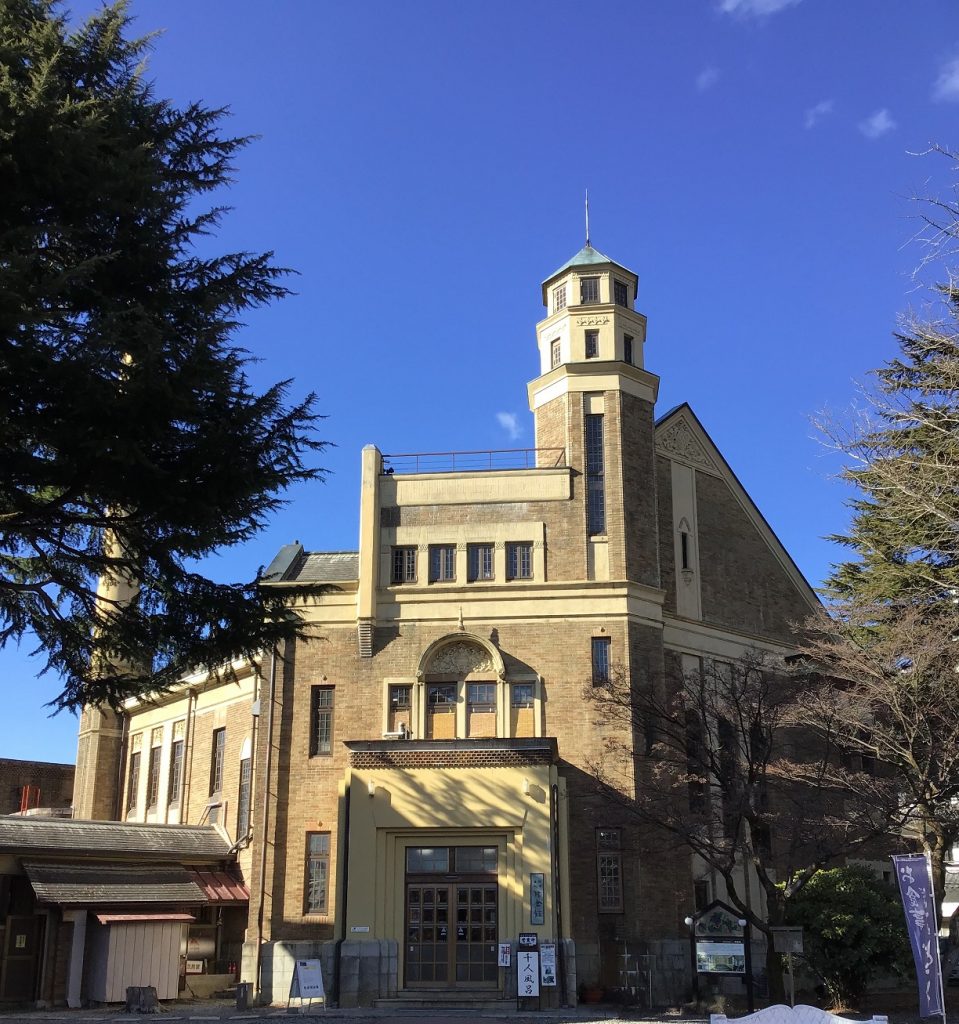
Kirigamine Highlands Hiking
Kirigamine, one of Japan’s 100 famous mountains, offers mountain hikes for all levels, including exploring the marshes and looping around the surrounding mountains. Beginners can also take a lift to the summit.
The highest peak is Mt. Kuruma-yama, and it is surrounded by marshes such as the Yashimagahara Marsh and the Kurumayama Marsh, where you can enjoy a variety of alpine plants depending on the season.
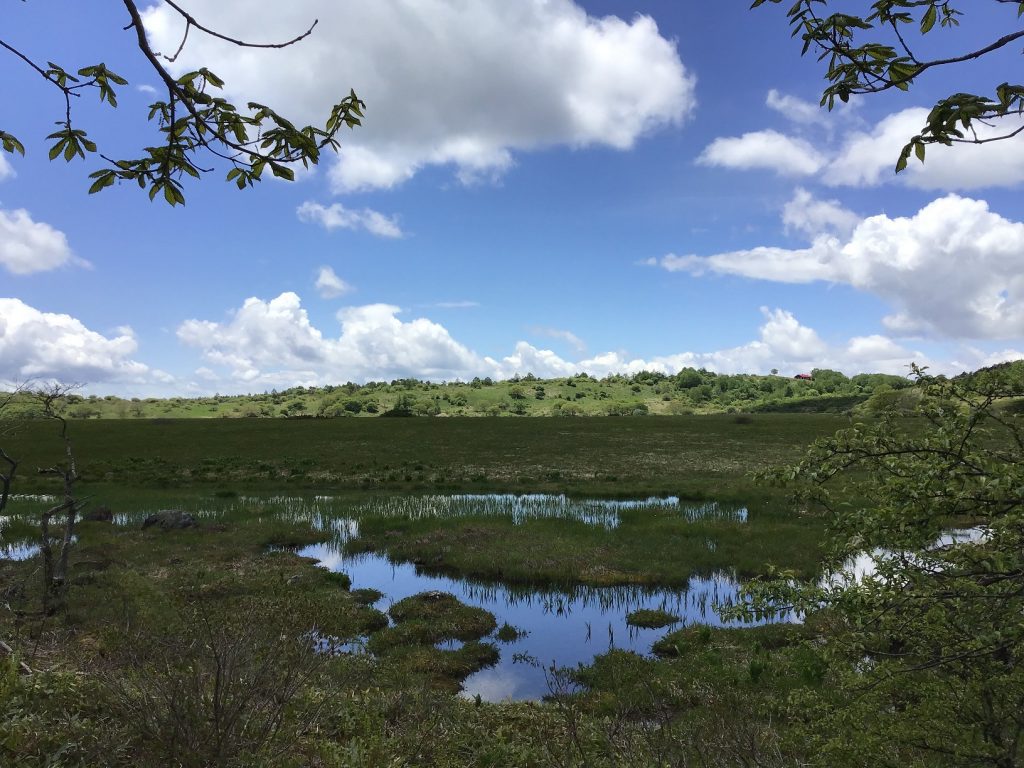
Winter sports are also plentiful!
There are many ski resorts dotted around Lake Shirakaba and the Kirigamine Highlands.
With an 80% chance of clear skies, you can enjoy beautiful views of the Japanese Alps, the Yatsugatake Mountains, and even Mt. Fuji in the distance from the mountaintops.
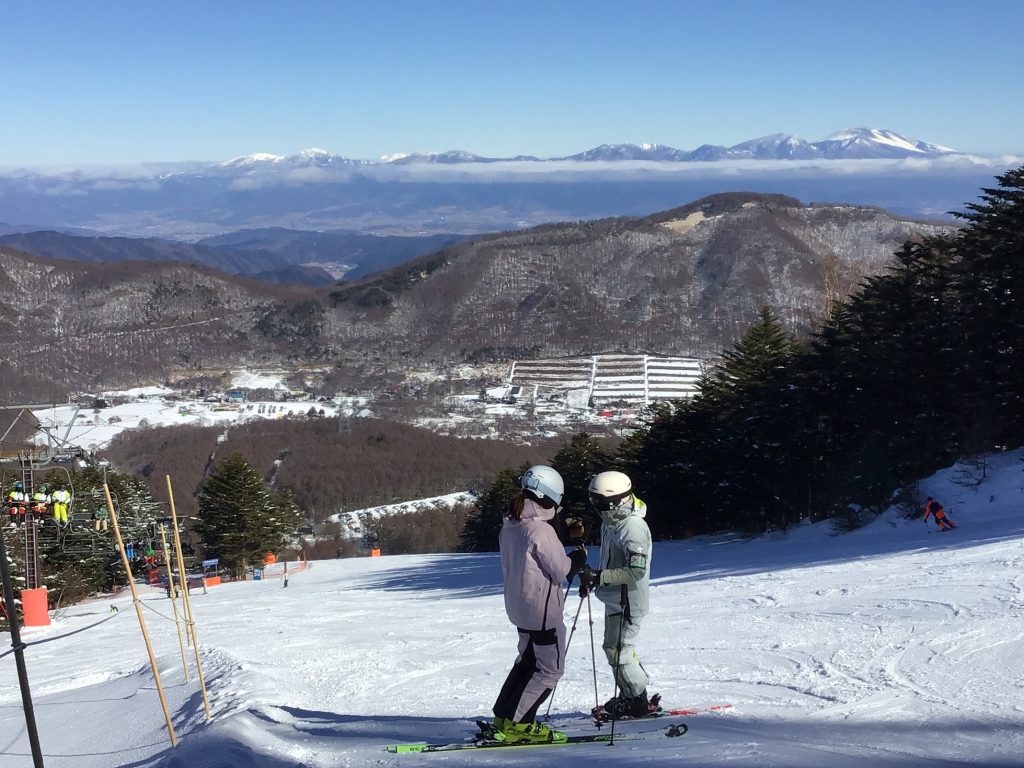
/// FIT package
We can arrange this tour for individual, family, or the small group, following to your designated date, through the year.
/// Itinerary
11:30 Meet with the guide at JR Kami-Suwa station, then move by chartered car.
- Suwa Taisha Shrine
- Takashima Castle
- Katakurakan
- Suwa Five Sake Breweries
- Tateishi Park
17:30 Return to Kami-Suwa station, then finish the tour.
** It’s available to change a 2-day, 1-night trip and enjoy hiking or skiing the next day.
/// Price for 1day trip
| Number of Guests |
1 | 2 | 3 | 4-5 | 6 or more (Max 8) |
| Price / person (Yen) |
195,000 | 105,000 | 70,000 | 54,000 | 47,000 |
Price Include:
- Chartered car
- English (or other languages) speaking guide
(English, Chinese, French, German, Italian, Spanish, Portuguese, Dutch, Russian, Thai) - Entrance fees described in the itinerary
- Five Sake Brewery tasting fee
- Commission for arrangements
- Commission for settlements by credit card
- Consumption tax
Price Exclude:
- Transportation costs to the meeting place / ending place
- Accommodation costs
- Food and beverage fee for customers and guide
- Souvenir fee / personal expenses
- Expenses for services not described in the itinerary
Regarding these standard courses, we can arrange the plan upon your request by adding / deleting destinations, and combining other courses before and after, making reservations of accommodation, transportation, restaurants, or event tickets, etc. Please contact us by all means.
Please see here for the arrangement fee.
ex.1 Arrangement for accommodation
Room charge 10,000yen(1night 1person) + Commission 1,650yen(incl. c-tax)=Total 11,650yen
ex.2 Arrangement for additional transportation
Super express train 20,000yen(1person) + Commission 3,300yen(incl. c-tax)=Total 23,300yen
/// Suggestion of Additional Trip from Matsumoto city
N-32 Castle town tour in Matsumoto
N-30 Zenkoji temple & Winter Fireworks (November)
Utsukushigahara Highland
From the plateau at an altitude of 2000 meters, you can enjoy a 360-degree panorama overlooking the Northern Alps, the Southern Alps Mountain Range, and Mt. Fuji.
In particular, the natural landscape where you can see the seasonal changes of the Northern Alps far above the clouds is as spectacular as the “Observatory of the Alps”.
Note: Except only limited summer season, you can’t go by public transport. If you wish to visit, please contact us at any time.
/// Cancellation Policy
Cancellation Policy for this course;
| Days to Departure | Cancellation Charge |
| More than 31 days | 10,000JPY |
| 30-15 days | 50% of trip price, Min 10,000JPY |
| 14-8 days | 70% of trip price, Min 10,000JPY |
| 7 days or Less, No Show | 100% of trip price |
Please refer to “Price, Terms and Conditions” for other detailed regulations.
/// Application Form
Please select the course and fill in the below box;
/// Payment
Payment can be settled by credit card (Paypal or Stripe).
After your booking, we will send you an invoice, then after your payment by credit card, the booking would be completed.
/// Contact
If you have any questions or offer to book, please send an email. We welcome even little questions! Don’t hesitate, and see you in Japan!!
Contact us: info@i-travel-square.tokyo
